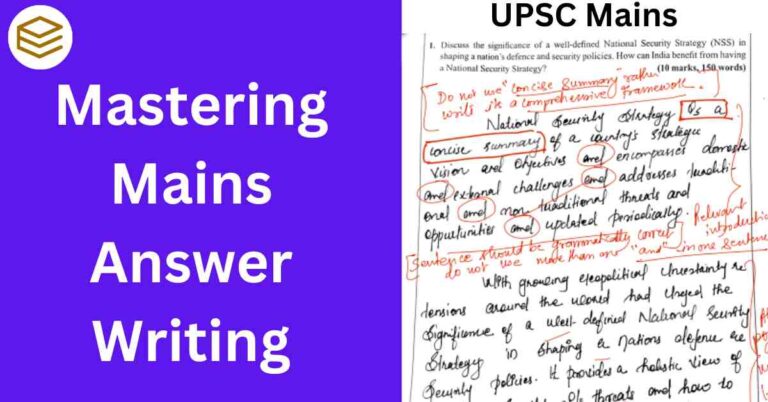October 25, 2025 1:12 am
- Q.1 Evaluate the impact of the Goods and Services Tax (GST) on India’s economy.
- Q.2 Discuss the role of infrastructure development in achieving sustainable economic growth in India.
- Q.3 Analyze the impact of globalization on India’s small and medium enterprises (SMEs).
- Q.4 Evaluate the role of the banking sector in promoting financial inclusion in India.
- Q.5 Discuss the significance of human capital development in achieving India’s demographic dividend.
Q.1 Evaluate the impact of the Goods and Services Tax (GST) on India’s economy.
Model Answer Guidance:
- Introduction: Provide a brief overview of GST and its objectives.
- Main Body: Discuss the impact on the ease of doing business, tax compliance, and revenue collection. Highlight challenges such as compliance costs for small businesses and revenue shortfalls for states.
- Examples: Use data or studies on GST’s effects on different sectors, like manufacturing and services.
- Conclusion: Suggest ways to improve GST implementation, such as simplifying the tax structure and improving tax administration.
Q.2 Discuss the role of infrastructure development in achieving sustainable economic growth in India.
Model Answer Guidance:
- Introduction: Define sustainable economic growth and the importance of infrastructure.
- Main Body: Explain how infrastructure development in sectors like transport, energy, and digital can stimulate growth, create jobs, and improve quality of life. Discuss the challenges of financing and environmental impact.
- Examples: Mention initiatives like the National Infrastructure Pipeline (NIP) and their expected outcomes.
- Conclusion: Conclude with recommendations for sustainable infrastructure development, such as public-private partnerships and green infrastructure investments.
Q.3 Analyze the impact of globalization on India’s small and medium enterprises (SMEs).
Model Answer Guidance:
- Introduction: Briefly define globalization and its relevance to SMEs.
- Main Body: Discuss how globalization presents both opportunities (access to global markets) and challenges (competition from multinational corporations) for SMEs. Highlight issues like technology adoption and regulatory hurdles.
- Examples: Use examples of specific Indian SMEs that have succeeded or struggled due to globalization.
- Conclusion: Suggest strategies to support SMEs, such as access to finance, technology upgradation, and market diversification.
Q.4 Evaluate the role of the banking sector in promoting financial inclusion in India.
Model Answer Guidance:
- Introduction: Define financial inclusion and the role of the banking sector in achieving it.
- Main Body: Discuss initiatives like Jan Dhan Yojana, microfinance, and digital banking, and their impact on financial inclusion. Mention challenges like banking infrastructure in rural areas and digital illiteracy.
- Examples: Cite statistics on Jan Dhan accounts and their contribution to financial inclusion.
- Conclusion: Conclude with suggestions for enhancing financial inclusion, such as mobile banking, financial literacy programs, and partnerships with fintech companies.
Q.5 Discuss the significance of human capital development in achieving India’s demographic dividend.
Model Answer Guidance:
- Introduction: Define human capital and demographic dividend, and their importance for India.
- Main Body: Explain how investments in education, healthcare, and skill development can enhance productivity and economic growth. Highlight challenges such as unemployment and skill mismatch.
- Examples: Mention schemes like Skill India Mission and Ayushman Bharat and their impact on human capital development.
- Conclusion: Suggest ways to optimize human capital development, such as reforming education and vocational training systems and improving healthcare access.


